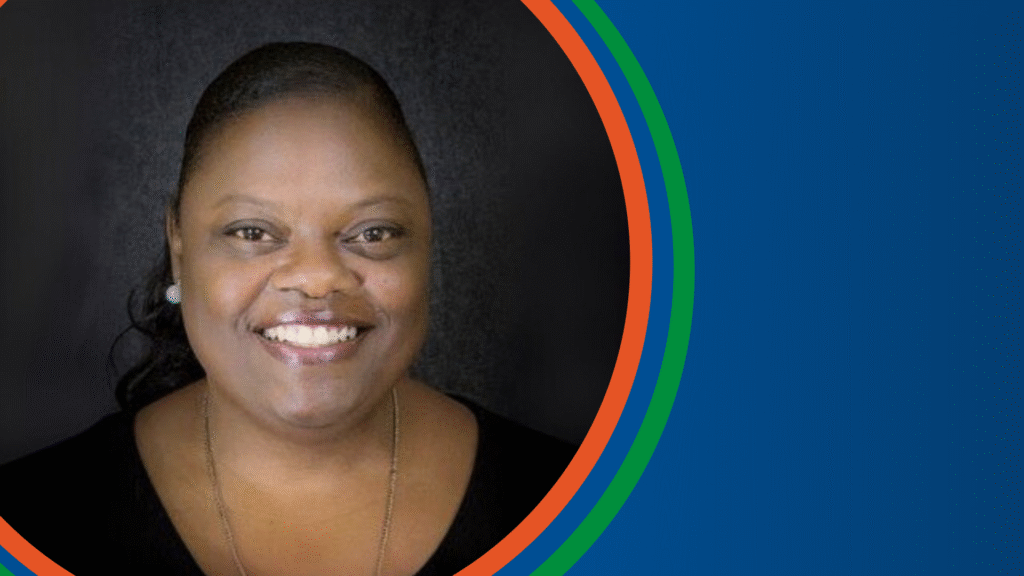What does it truly mean to belong—and why does it matter in our Montessori communities? We explore these questions in a new two-part AMS Learning series: Belonging: What It Is and Why It Matters and Building a Culture Where Everyone Belongs. In the conversation below, class facilitator Cathy Durand-Horne, DEIB Consultant at the American Montessori Society, shares why belonging is foundational to DEIB work, how it connects to Montessori principles, and what it takes to create learning environments where everyone feels seen, heard, and valued.
1. What does “belonging” mean to you personally, and why did it feel important to center these classes around it?
For me, a sense of belonging is when a person feels as if they are welcomed and free to be their whole selves. Their voice is not only heard, but honored and respected. I know I am my most confident and authentic self when I feel a true sense of belonging.
It’s common to misunderstand what it means to truly belong. We think that a true sense of belonging can only be experienced when we are with people who may look like us or with whom we might share DNA. I have personally been the only person who looks like me in spaces because I checked a box, not because I truly belonged. On the flip side, I have been in spaces where I am the only person who looks like me and felt as if my presence was welcomed and that my voice was heard and honored.
I believe we struggle in the early childhood education field to create spaces where everyone feels belonging because at times we’re too busy checking a box labelled diversity, equity or inclusion. With the current state of education in the United States, it is even more important that individuals feel a strong sense of belonging in their learning communities and schools.
2. How does a focus on belonging deepen or expand the way we approach diversity, equity, and inclusion in schools?
By focusing on belonging, we are actually upholding the values we proclaim. It is easy to check the boxes of creating a space that includes a diverse group of people and may sometimes seem simple to commit to equitable practices. However, when we shift the focus to creating belonging, this gives a voice to each of those diverse people whom we have included and it forces us to truly honor those voices by operating in a manner that holds space for each of their needs. This guides us in creating practices to ensure that each of those needs are respected, considered and met.
3. Can you share a bit about the evolution of DEIB work in educational spaces and where you see it heading now?
DEIB work in schools began years before we put a name to it. While not the only example, we can look back at the significant impact of the civil rights movement and Brown vs the Board of Education. During these particular struggles, the fight was for equality (the same treatment for everyone); the focus shift to equity challenges us to shift the line of thought so that everyone gets the same shot at success, recognizing and acknowledging that everyone is not starting from the same point and does not have the “home court advantage”.
We can also look at legislation like the Individuals with Disabilities Education Act (IDEA), which guarantees access to education for students with disabilities. Both of these movements forced us to take a deeper look at how we can work to ensure that we are addressing the different needs of all students and making the necessary adjustments so that all students can thrive.
I would like to believe that by continuing to include DEIB work in our mission statements and strategic plans for our schools, and by really taking the time to complete Equity Audits like the one included in the AMS publication Equity Examined, we can continue to keep it at the forefront of our educational system. It is unfortunate that we currently exist in a space where discussing diversity, equity, inclusion and belonging has once again become taboo and many educational institutes and schools have abandoned their DEIB efforts out of fear. This makes me very concerned for the future of our children and for the future of our world.
4. What are some common misunderstandings about belonging in the context of DEIB? What do you wish more educators understood?
There is the misconception that as long as you have created an environment that includes a diverse group of people and you attempt to implement equitable practices, you have automatically created a space where everyone belongs. Unfortunately, this is not the case. Anyone can look at a learning community or school and mark off a checklist of whether or not Diversity, Equity and Inclusion are present, without ever having a conversation with anyone who is a part of that community. However, to determine whether or not a sense of belonging is felt, it requires a personal connection with the members of that community and can only be expressed by their voices.
By that same token, in order to create an environment where a sense of belonging is felt by everyone, the voices of the people must be included in shaping what that means. I wish that more educators understood that creating and sustaining an environment where everyone belongs, requires a personal connection and a commitment to accountability and sustainability. It requires continually holding up a mirror, acknowledging where growth is needed, and making the necessary changes that are required.
5. There’s a beautiful concept in Montessori’s Cosmic Education about helping children “find their place in the universe.” How do you see Cosmic Education connecting with the work of belonging?
There is a direct connection in that Cosmic Education supports the celebration and respect for all life and helps children to explore the interconnectedness of all cultures and species. This concept helps children to develop a greater appreciation for the diversity that exists in the world and has evolved over time. As children explore cosmic evolution, they begin to understand that they too have a unique place and purpose that deserves to be celebrated. Our human tendency is to assign value to our differences, instead of celebrating and respecting them. Cosmic Education helps to correct this notion.
6. Was there a particular moment, experience, or challenge that led you to this work?
From a young age, I have often had the experience of being the only person of color in a classroom, boardroom or social setting. In this regard, I have always felt the need to create a space where I felt a sense of belonging for myself and for others.
I remember being on the 11th grade prom planning committee at my predominately white high school. I suggested that instead of a band for the event, which would potentially only play one type of music, we should have a DJ who could play a variety of music. My suggestion created discord and I was told that no one wanted to listen to rap music all night. This was a pivotal moment for me. Not only was there a huge stereotypical implication; there was also a misunderstanding of my goal. My goal was for us to provide a space where everyone could have the same opportunity to request the type of music they enjoyed.
This was the moment when I realized that even though I had a ”seat at the table”, my voice and perspective were not truly welcomed. I checked the box for diversity by being included on the committee and I was entitled to a vote, but I did not feel a sense of belonging. My commitment is to helping schools and learning communities create spaces where everyone feels a sense of belonging.
7. In developing these classes, what did you hope participants would walk away with—not just intellectually, but emotionally or personally?
Having conversations about diversity, equity, inclusion and belonging does not have to be taboo. As educators, we have the opportunity to plant seeds that will hopefully grow over time—seeds that embrace DEIB principles and practices as the norm instead of concepts to be feared. Part of our brain’s job is to protect us from threats, both actual and perceived, and we often fear what we don’t understand. It therefore makes sense that until people take the time to truly understand principles of DEIB and why they are critical in education, we will continue to respond out of fear instead of learning about, embracing, and celebrating our differences.
I hope that people walk away from these classes with a desire to learn more and feel empowered to create and maintain learning communities where everyone truly belongs. I also hope that by reflecting on their personal journeys and experiences with belonging, people will make stronger personal commitments and intentional efforts in this area of their lives.
To dive deeper, register for the two-part self-guided AMS Learning series: Belonging: What It Is and Why It Matters and Building a Culture Where Everyone Belongs—available now on the AMS Learning platform.


